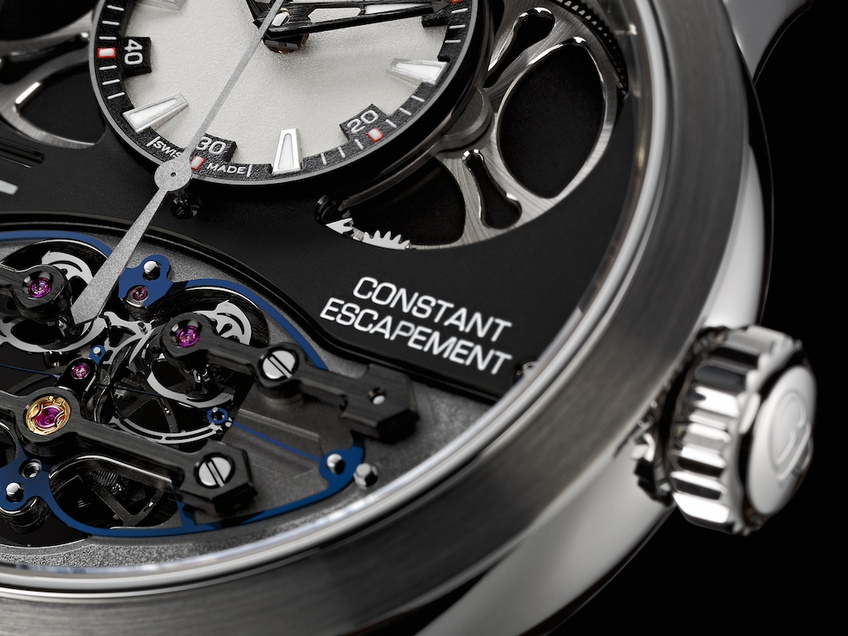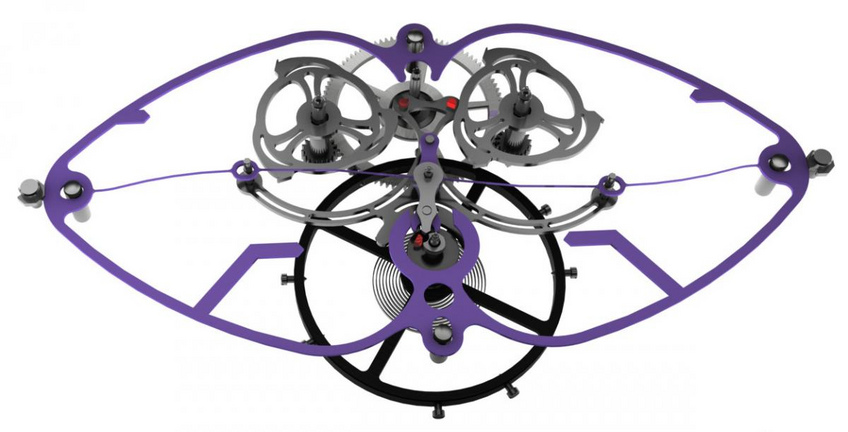

Willy Schweizer: When Innovation Rhymes with Discretion
Willy Schweizer, curator, conservator and historian in charge of the patrimony of Girard-Perregaux, reveals a passionate and important story to us, which had, for decades, discreetly been kept in the confidence of a few initiates into the true history of Haute Horlogerie.
First published on veryimportantwatches.com
Constantin Stikas: What do we gain with high frequencies?
Willy Schweizer: Accuracy, without any doubt.
CS: What do we risk losing with high frequencies?
WS: Problems may appear in terms of power reserve and lubrication. Moreover, in principal, the higher the frequency, the smaller the balance, which can render the adjustment a delicate procedure.
CS: Few people know of the role of Girard-Perregaux in the birth of 5Hz. Could you talk to us about the participation of the House in the evolution of high frequencies?
We were very simply the first Swiss manufacturers to have presented a high frequency watch in 1965. One must know that, from as early as 1953, Girard-Perregaux had its own in-house R&D Department. Its first notable development was the Gyromatic, presented in 1957: it is an original self-winding system, without a cog-wheel.
Subsequently there were high frequencies. In order to maintain the project confidential until its completion, it was Hattori, the general agent of Girard-Perregaux in Japan, who was entrusted with producing, in great secrecy, the special escapement necessary for the functioning of the first high frequency prototypes. The first Gyromatic HF models were presented in 1965. These literally overturn the conditions of the period in terms of chronometry.
GP, in effect, was presenting pieces randomly chosen from its lines at the Observatory (these have been equipped with escapements made by the ‘Fabriques d’Assortiments Réunies’ -FAR-), which were winning in all tests next to watches that had been prepared with great care for weeks by their competitors. This led us to win the centenary prize at the Neuchâtel Observatory in 1966. Moreover, high frequency was for a long time considered as the last useful perfection in regard to mechanical watches.
It is noteworthy that the ensuing studies are orientated towards quartz, with the first Swiss quartz watch produced in 1971, the famous 32.768 Hertz frequency of which became a universal standard.

CS: During these years, did Girard-Perregaux always have 5Hz models in its collection?
WS: No. We had HF models until the mid-‘70s.
CS: Man has conquered 4Hz, he remained at 5Hz for more than four decades, and then TAG Heuer achieved 50Hz, two months later 500Hz and one year later 1000Hz!... Are there any limits to watchmaking?
WS: No. But one must not focus on high frequencies: there are equally also constant force and new materials.
CS: Maximilian Büsser said in his interview that, “following the invention of quartz, in Watchmaking, we can state that it is the equivalent of relying on steam power in the era of the TGV. Therefore, when we move from 5 to 6, 8 or 10 Hz, (and I am not talking about 500 or 1000Hz), it is the same as if we were straining to make a steam-powered machine that is 5 or 10% faster than that of its counterpart...” And after that, Jean-Pierre Musy, Patek Philippe Technical Director, replied to this remark by Maximilian Büsser: “When we are talking about high-quality watches that have a chronometrical bulletin, their COSC values range from –6 to +4. There is a daily deviation of 10 seconds!
WS: In any case, it is significant, 10 seconds per day, this amounts to more than one minute per week! Do you believe that there is nothing to be done? I believe that there is something to be done! There is work to be done in order to improve this situation. We cannot allow ourselves to make watches that have upwards of a one minute error margin within the space of a week!

CS: The mechanical watch must be more accurate than that!” What is your opinion about this?
WS: Max Büsser is correct: a mechanical watch is an anachronism. More than the steam engine, I would compare it to the automobile, always of a superior performance, but the energy output of which remains lamentable, since the majority of the energy furnished by the motor is dissipated in the form of heat and only a fraction of it reaches the wheels. As for Mr. Musy, he is also right: we can do better, but high frequency is not a panacea.
As it concerns us, the R&D Department worked on a revolutionary escapement functioning at a constant force, which permits it to maintain a perfectly equal harmony throughout the entire winding period. In order to achieve this, we resorted to silicon. In the sphere of new materials, there is a lot of new ground to explore.
We are presenting the result of our research on our site, and also of course at Basel.
CS: Switzerland, to most people, is a ‘slow’ country. However, the CERN is located in Switzerland and today we have seen Horlogerie regularly beating high frequency records… What is your opinion on this?
WS: Seen from the outside, we may have this impression, which is reinforced by the total apathy of our political authorities. By contrast, this is not the case in cuttingedge technology industries. There is watchmaking and the CERN, but also universities such as EPFL, or the CSEM in Neuchâtel, with which we collaborated in the development of the product which I talk about above.
CS: What is your personal relationship to speed?
WS: I would say one of love-hate. I participated in my first car races from as early as the age of 18 and I evolved in Swiss and European rally championships over a 10-year period. Since then, I have always kept one or two sports cars for pleasure, but these have cost me a prolonged confiscation of my driver’s license for seriously exceeding the speed limit. It is infuriating to be a constrained and enforced pedestrian…
CS: Do you think that a speed limit should be imposed on motorways and, if yes, that it should be set at how many km/h?
WS: The problem is that learning how to drive today in no way prepares for high-speed driving, actually quite to the contrary. Moreover, in Switzerland, you can learn really well on a Clio and, with your driver’s license in your pocket, you may offer yourself a Ferrari without anyone asking you the least bit of information regarding your driving skills. There is therefore a double danger.
Having said that, a differentiated limit of between 120 and 140 on motorways and 80 and 110 on the road would seem reasonable to me. But, unfortunately, that is pure utopia, even if one only considers the insurance company lobby, to which a good driver is a driver who has come to a halt…




